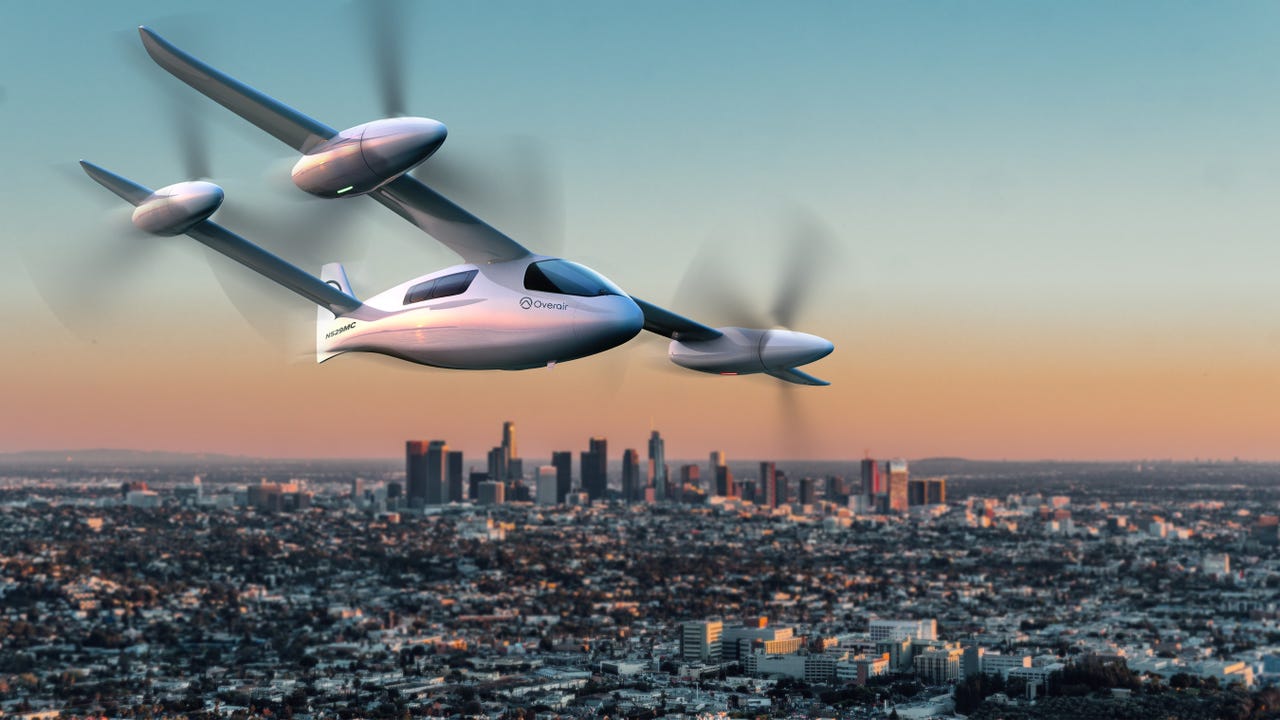Butterfly propulsion for electric aviation commences testing


Overair EVTOL over Los Angeles.
Electric propulsion has been on the horizon for aviation for some time. A new propulsion system, which has commenced testing, may be a crucial step toward realizing what's proven a surprisingly difficult vision.
Overair, the company behind the "Butterfly" electric vertical takeoff and landing craft, believes its full-scale propulsion system, which its testing in full-scale tests that make some pretty excellent video, will be a game changer for the next iteration of the aviation industry.
"Achieving our full-scale propulsion test goals is an exciting milestone for the Butterfly program" said Jim Orbon, Butterfly Program Manager at Overair. "Not only does it allow us to validate our design choices and correlate our simulation results to real-world data, but it also proves the team's technical capabilities and ability to execute our development plans. But this milestone is a means to an end. Next stop, full-scale prototype, with long-lead-time parts currently underway."
Firms pursuing electric propulsion for the aviation have been busy of late. Last year we wrote about California-based Archer, a company that bills itself as building the world's first all-electric airline around vertical takeoff and landing vehicles to move people throughout the world's cities. Archer and Fiat Chrysler Automobiles (FCA) then entered into a supply chain agreement to enable Archer to benefit from access to FCA's low-cost supply logistics, as well as advanced composite material know-how and engineering experience.
Around the same time, MagniX, which is developing technology to turn traditional aircraft into electric vehicles, began consolidating operations at a new 40,000-square-foot building to aid its mission of all-electric aviation for planes carrying up to 40 passengers. MagniX will first retrofit small turbine-engine airplanes with its electric motors, including for existing regional air providers like Vancouver-based Harbour Air, North America's largest seaplane airline, which is working with MagniX on an all-electric fleet, a move that's being watched a bellwether in the sector.
Overair's vectored thrust design accounts for some of the biggest hurdles for EVTOLs in populated areas, including noise. The design is aerodynamically efficient and according to Overair a fundamentally different vehicle than other EVTOLs due to its very large propellers and efficient wing-borne flight for cruising over longer distances. As a result of their size, Butterfly's propellers can spin slower during various phases of operation (hover, transition, cruise), which makes them quieter and draw less power from the batteries.
The name of the game in electric aviation is power to weight ratio and battery management. Thanks to substantial power and control margins, Overair is betting its large propellers will provide unmatched efficiency -- an incredibly important attribute when flying urban routes in varied environments.
Overair is targeting a first prototype flight by 2023 and, pending Butterfly's FAA certification, has set a goal of entering commercial service in 2026.